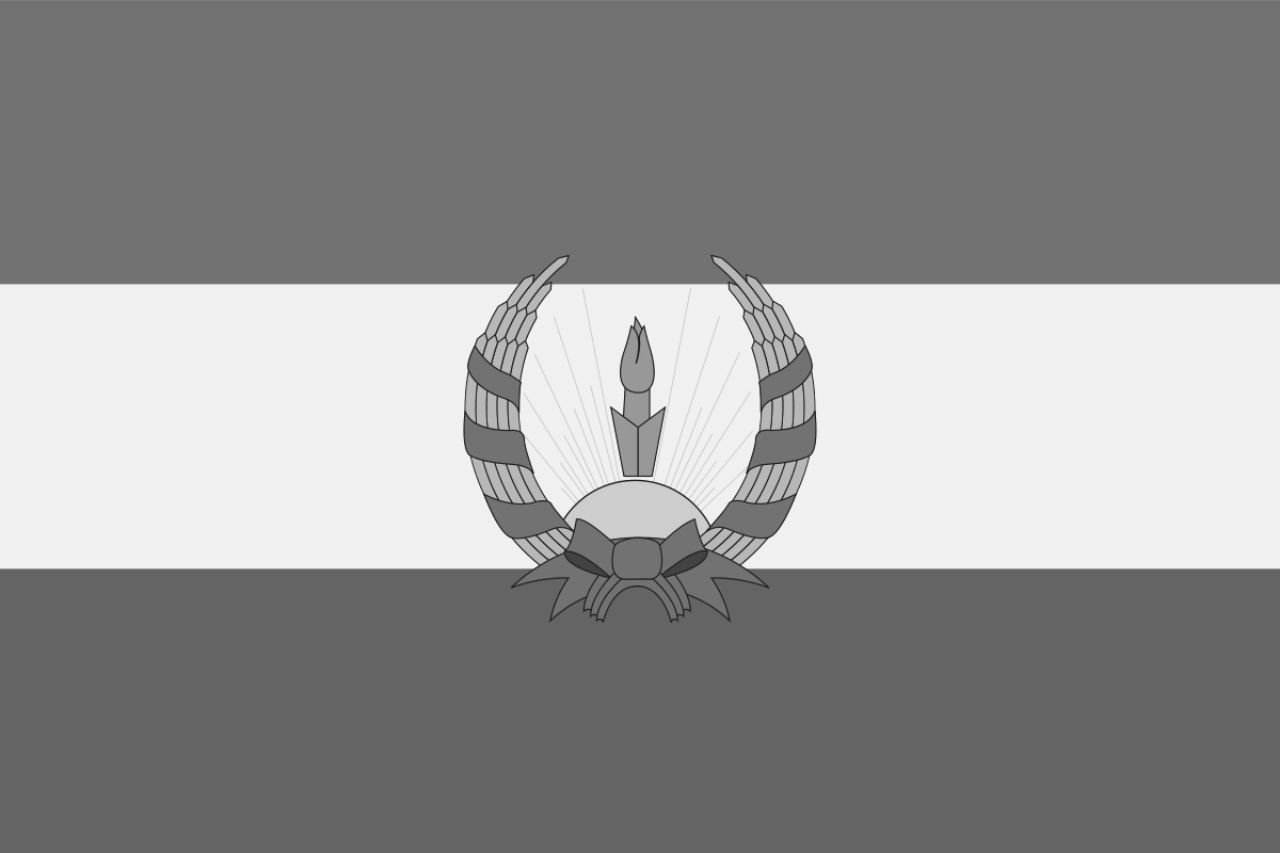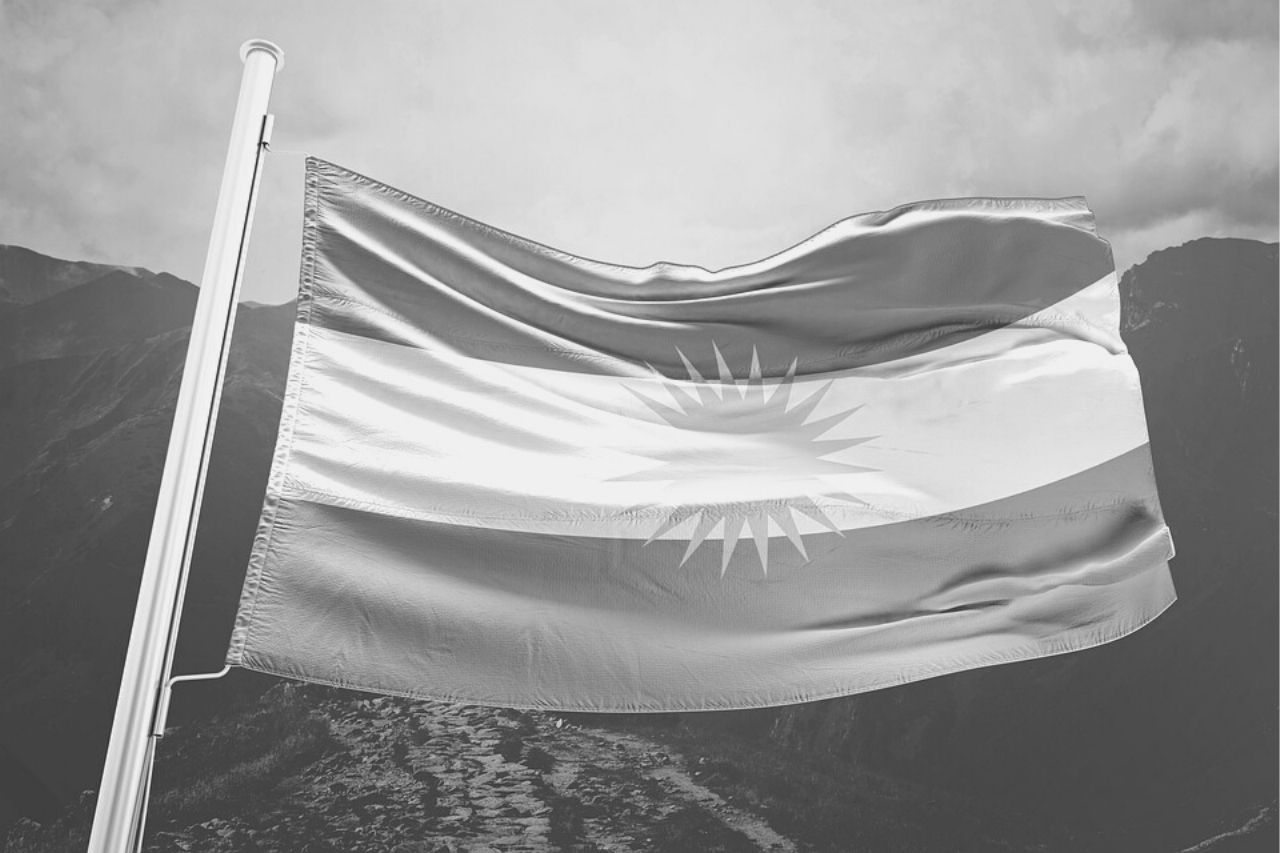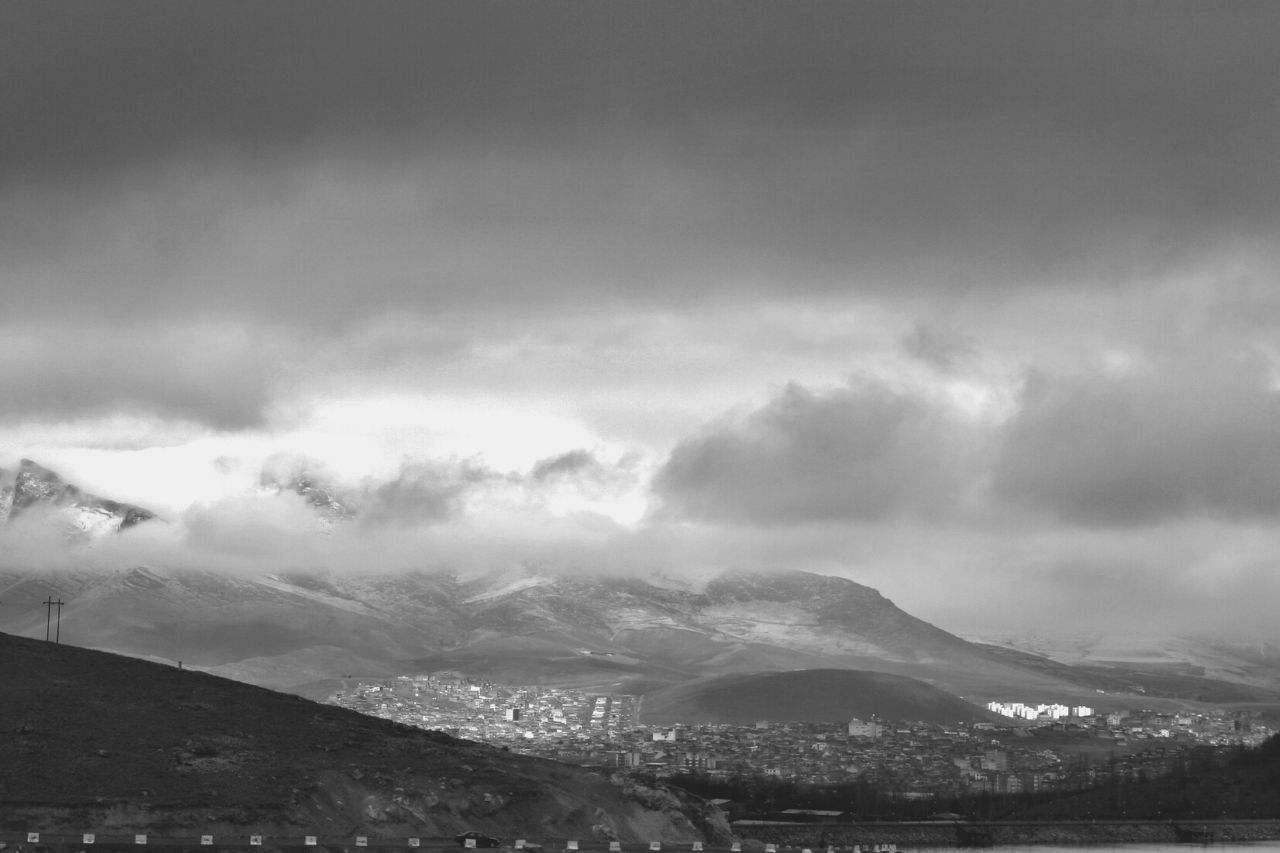Republic of Mahabad: State With the Shortest Existence in History
The Republic of Mahabad was founded in January 1946. Although it survived for less than a year, it hugely influenced Kurdish nationalists around the world.
In this article, we cover how this republic rose and fell so quickly.
What Was the Republic of Mahabad?
The Republic of Mahabad was the first and only established Kurdish state. This republic only existed for a year between 1945 and 1946.
The Republic of Mahabad’s story starts during the Anglo-Soviet invasion of Iran in 1941. The invasions attempted to create a Persian corridor where American land-lease supplies could easily reach the Soviet Union. The invasions led to the abdication of the pro-Nazi Iranian sovereign Reza Shah. He had a long record of brutally repressing the Kurds, indigenous people, and 10 percent of Iran’s population.
He tried to ban the Kurdish language and their national dress. He attempted to destroy their organizations by executing or deporting their members.
Most Kurds welcomed the advance of the Soviet Red Army into northern Iran. The Soviets tried to attach north-western Iran to the Soviet Union, promoting Kurdish nationalism. After these events, the Kurdish put together a manifesto that sought autonomy and self-government within the Iranian state’s limits.
The imprisoned or exiled chiefs returned to their tribes, re-establishing independence. The Kurdish people seized all the weapons left by the Iranians after the collapse of occupied areas. In the cities, political groups began to form a republic that advocated Kurdish cultural and political autonomy.
In Mahabad Iran, where Kurds mainly inhabited, a committee supported by tribal chiefs took over the local administration. The Society for the Revival of Kurdistan was then formed with Qazi Muhammad was elected as chairman. This committee administered the area, with the Republic of Mahabad being declared in December 1945.
Iranian forces entered Mahabad in 1946, closed the printing presses, banned Kurdish being taught, and burned all Kurdish books. The Mahabad republic received strong support from the Soviet Union. After an agreement brokered by the United States, the Soviets agreed to leave Iran. The sovereignty was restored to the Shah in 1947. Shortly afterward, the Shah ordered an invasion of the Republic of Mahabad.
Where is Mahabad?
Mahabad is a small town in Iran, with a population of around 16,000. It was formerly the capital of the Republic of Mahabad.
Miandoab borders Mahabad to the north, Sardasht by the south, east by the Bokan, and Piranshahr and Naghade to the West. It is situated south of Lake Urmia and sat in a narrow valley. Now Mahabad is the capital of Mahabad County, West Azerbaijan Province, Iran.
It was founded in the Safavid period (1501 to 1722). It was known initially as Sablagh (which translates from the Turkish for cold spring). Later, the name changed to Sablaghi Mukri (which translates as the cold spring belonging to the Mookri tribes). In 1936, the name changed to Mahabad.
Iranian authority was removed in 1943 when in response to sugar rationing, a crowd besieged and destroyed the police station. It was also under Kurd control for a short period in 1979, during the Iranian Revolution.
The Flag of Mahabad
The Republic of Mahabad used two flags. One was a red, white, and green tricolor with the Kurdish sun symbol in the center. The other flag had the same tricolors, only with a Soviet-style emblem in the center.
It was described as displaying a sun surrounded by corns of wheat with a quill in the middle, the sun for freedom, and the quill to underline your actions’ importance. The sun symbol, which the Kurds still use, has 21 rays of equal size and shape, 21 stands for rebirth and renaissance.
This flag was first raised in January 1946 and was based on a description given by Qazi Mohammed. The Soviet-influenced flag was used until the Soviets withdrew their support for the republic. After this, the sunburst flag was the only one used.
Who was Qazi Muhammad?
Qazi Muhammad was known as the Kurdish independence movement leader and the founder of the Kurdish Democratic Party of Iran. He was born in the Kurdish region of Iran in 1893. He campaigned for there to be more transparency in politics.
He was born into a noble Kurdish family from Mahabad. His father had cooperated with Kurdish chieftain Ismail Simko during his 1920s revolt against the Iranian government. His brother, Sadr Qazi, was a member of the Iranian parliament. After the death of his father, Muhammad was nominated as a Mahabad judge.
He became the president of the Republic of Mahabad. On his first day of presidency, he announced opening a school for girls, universal elementary education, and for Kurdish to only be spoken in schools.
In April 1946, with the support of the Soviets, Qazi Muhammad signed a peace treaty with Ja’far Pishevari, a communist and leader of the Azerbaijani republic. This treaty ensured the Azerbaijani and Kurdish minorities were preserved in the Mahabad republic.
After the collapse of the Mahabad Republic, Mohammed and several ministers were arrested by the Shah Regime of Iran. He was prosecuted in 1947 in an open court alongside his comrades.
He was accused of proclaiming independence, manipulating the map border to Iran, occupying Iranian land, oil trading with the Soviet Union without the Shah’s consent, alongside the creation of the Kurdistan flag, currency, and general Kurdistan society. He was hung in Chawarcha Square in Mahabad on 31 March 1947.
Upon his death, he left a will to the Kurdish nation. He asked them to unite as a nation and empower themselves against their enemies. He is still celebrated today by the Kurdish people.
The Republic of Mahabad’s Relationship with Soviets
The Republic of Mahabad depended on Soviet support. One of the issues with the Kurdish Republic of Mahabad was how much they relied on support from the Soviet Union. This relationship also alienated the republican from the West, causing Western powers to side with Iran’s central government.
Qazi Muhammad was upfront about how much the Soviets funded and assisted his republic. He was adamant that the Democratic Party of Iranian Kurdistan was not communist, despite the rumors spread by Iranian authorities.
How much funding and influence the Soviets had on the republic is disputed between contemporaries of Muhammad. Some believed the Soviets’ role was exaggerated, while others feared Muhabad was a puppet state for the Soviets.
The Soviet Union was generally ambivalent towards the Kurdish administration. They encouraged Qazi’s administration by helping keep out the Iranian army, buying tobacco crops, and providing motor transport. Still, the USSR had no civil agency in the republic.
Initially, the Soviets did not like the Kurdish administration because they refused to join the larger Democratic Republic of (Persian) Azerbaijan and discouraged the formation of an independent Kurdish state. After the fall of Mahabad, the Soviet Union allowed the safe passage of Mustafa Barzani and his followers into their country.
What Was the Democratic Party of Iranian Kurdistan?
The Democratic Party of Iranian Kurdistan (PDKI) was an armed leftist ethnic party of Kurds in Iran. Currently, the party is banned in Iran and cannot operate publicly. The Democratic Party of Iranian Kurdistan was founded in 1945 by Qazi Muhammad in Mahabad, Iran.
The Democratic Party of Iranian Kurdistan played a significant role in the creation of the Mahabad Republic. After the Mahabad Republic’s fall, many of this democratic party’s leaders were arrested and executed.
Although they struggled after the downfall of the Mahabad Republic, the political party saw a revival under the anti-Shah administration of Mohammad Mosaddegh in the early 1950s. This revival ended in 1953 after Shah Mohammad Reza Pahlavi took complete control.
In 1958, the Democratic Party of Iranian Kurdistan was on the verge of unifying with the Iraqi Kurdistan Democratic Party. The SAVAK secret police soon dismantled it. What was left of the PDKI continued to support KDP until they started to work with the Shah.
The Democratic Party of Iranian Kurdistan reorganized itself, marginalizing its pro KDP leader Abd-Allah. They started to recruit communist and nationalist members, forming a Revolutionary Committee to fight the Iranian regime. This Revolutionary Committee began a revolution in March 1967, which ended after an unsuccessful 18 months.
Led by Abdul Rahman Ghassemlou, the PDKI fought alongside Islamic and Marxist movements against the Shah in the 1979 Iranian Revolution. The new Islamic Republic refused Kurdish demands and suppressed any pro-Kurdish parties. Although the Democratic Party of Iranian Kurdistan is in exile, they still hope to achieve Kurdish fights with a democratic Iran.
What is The Kurdistan Democratic Party?
The Kurdish Democratic Party (KDP) is the oldest Kurdish political party in Iraq. The political party was founded in 1946 in Mahabad and led the fight for autonomy and independence from Iraq.
The actions of the Soviet Union pushed Mustafa Barzani to form the Kurdish Democratic Party. Various factions within the party had their own beliefs. Some members had left-wing communist ideologies; others were right wind conservatives, where progressive socialists sat in the middle. Although they all believed in Kurdish rights, some wanted their nation; others wanted autonomy within the federated Iraqi government.
Mustafa Barzani was the party’s leader from 1949 to 1979. He is still considered the father of the Kurdish national movement. His son Masoud Barzani was elected president of the party in 1979. In this period, intellectuals from the Kurdish Democratic Party formed powers alongside the leading cleric.
Due to the boom in the oil trade during the 1960s, the Kurds took advantage of the expanding commerce. The Kurd’s dependency on the short land routes to Europe increased as the Iraqi economy expanded.
After Saddam Hussein took control of Iraq, with his Baath party, Syria and Egypt suggested that Arab nations should unite. The failure of the Arab nations was blamed on Kurdish uprisings and corruption. Baath supporters sought the genocide of the Kurdish race. The arrest of a negotiating KDP team in 1963 and the campaigns against the KDP forces by the Iraqi army validated these views.
When neither the Baath party nor the Kurdistan Democratic party achieved victory, Hussein suspended the violent military operations. He negotiated a deal with the KDP leaders. This agreement accepted the idea that Iraqi could be Arab or Kurd. It established Kurdish as the official second language of Iraq.
Within four years of signing, an autonomous region was formed. The Kurdish state deteriorated after a failed assassination attempt on the party’s leader (which was blamed on the Democratic Party of Iranian Kurdistan but was the work of the Baghdad regime). Years after the agreement was signed, Baghdad limited Kurdish autonomy, preventing them from having power on an executive or legislative council.
In response to the downfall of Kurdish states, the KDP put together guerrilla attacks on Iraqi government forces. With Iran’s support, the U.S., and Israeli sources, the Kurdish Democratic Party became more confident in their campaign against the Iraqi military. Iraq had superior military power and drove KDP into Iran. Once exiled, Baghdad reduced Kurdish political influence within Iraq and relocated the Kurdish people into a minute autonomous region.
The political party and its activities have been suppressed since 1980. On 13 July 1989, Abdul Rahman Ghassemlou, secretary-general of the Kurdistan Democratic Party, and two other high-ranking members of the party were assassinated in Vienna, Austria. Ghassemlou’s successor, Sadegh Sharafkandi, was assassinated in a similar manner, 17 September 1992 in Berlin.
Conclusion
The Republic of Mahabad was an experiment in Iranian self-rule that only last one year. Their history involves violent rampages, Soviet influence, and the overthrow of the Shah of Iran. Let’s summarize what this article covered.
The Republic of Mahabad was the first and only established Kurdish state.
The Republic of Mahabad only existed for a year between 1945 and 1946.
Mahabad is a small town in Iran.
Qazi Muhammad founded the Republic of Mahabad. He was known as the Kurdish independence movement leader and the founder of the Kurdish Democratic Party of Iran.
After the Mahabad Republic collapse, Qazi Mohammed and several ministers were arrested and executed by Iran’s Shah Regime.












